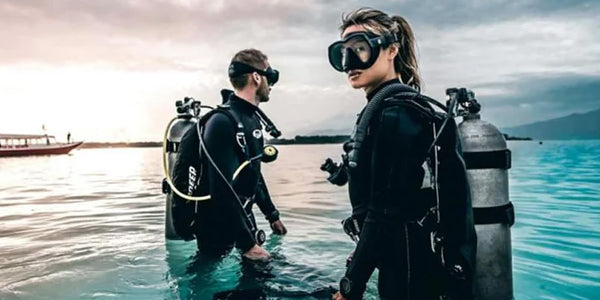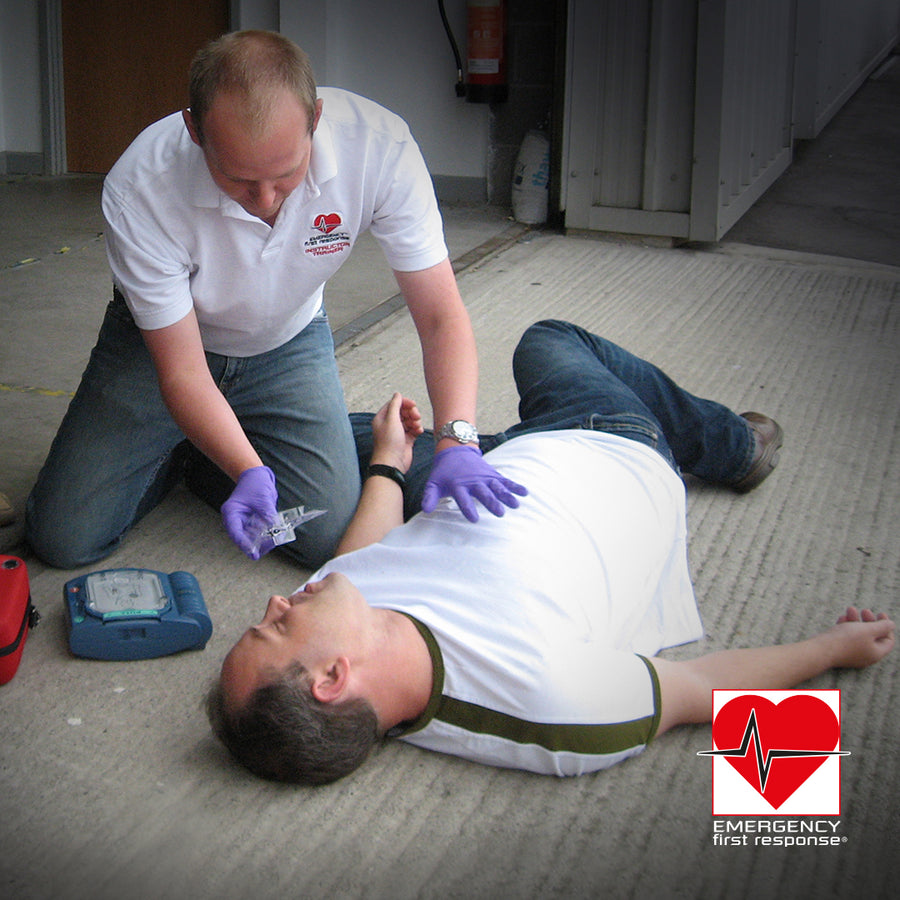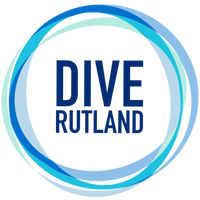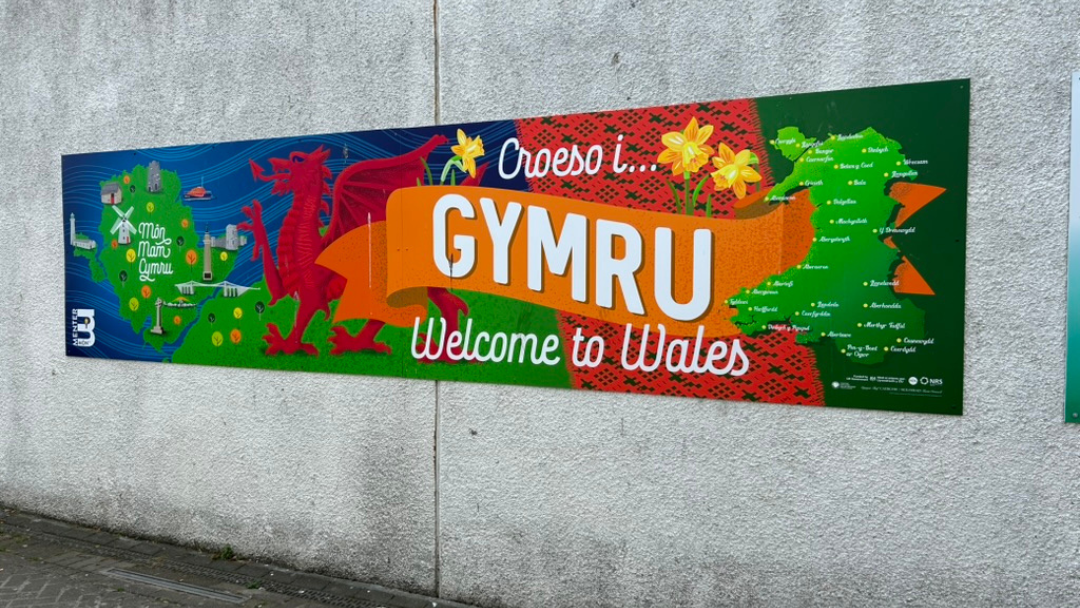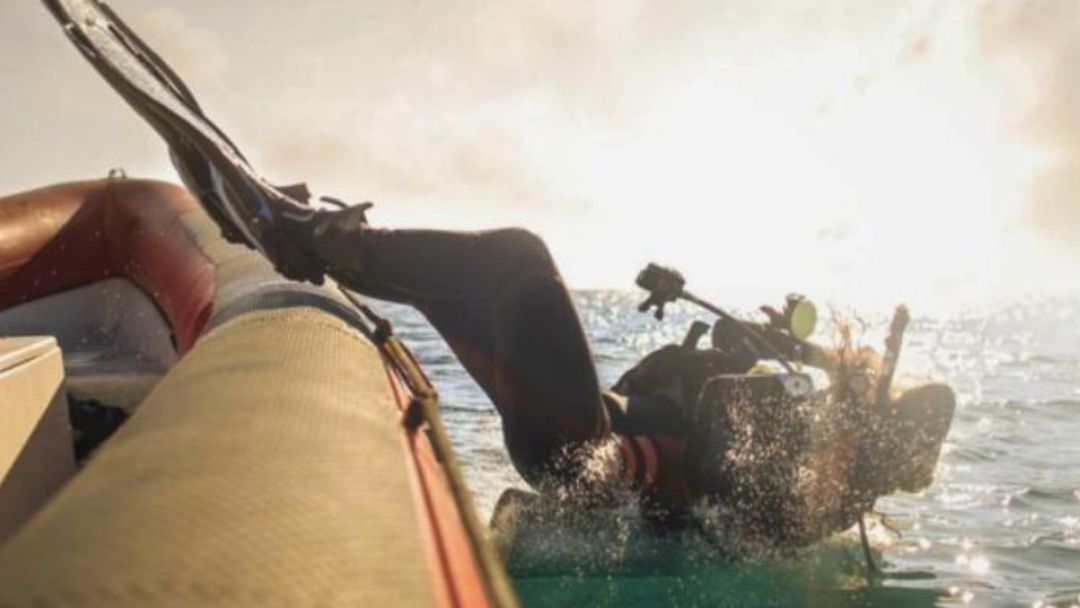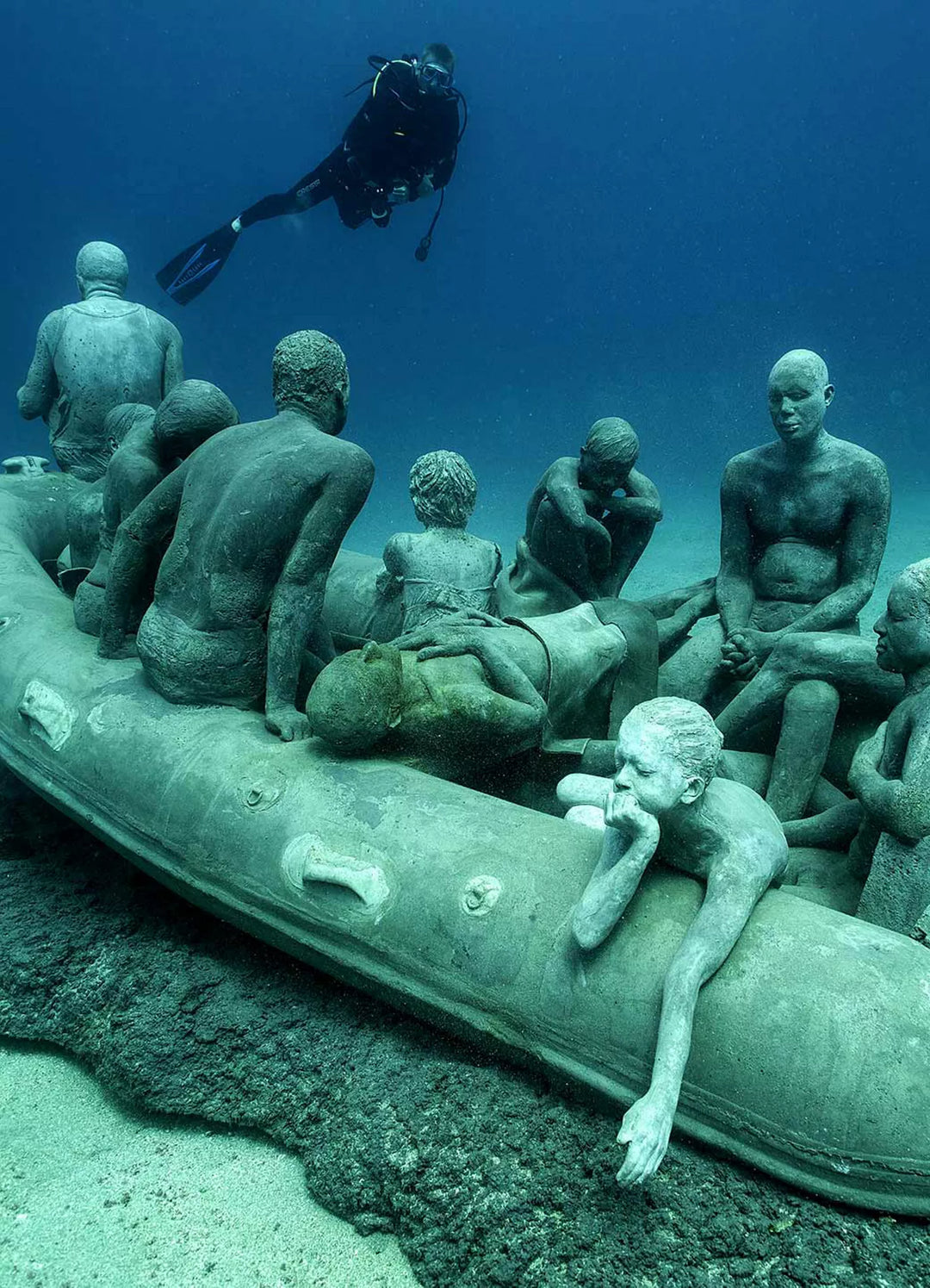Choosing Surface Marker Buoy (SMB)
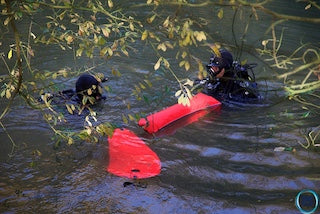
Choosing Surface Marker Buoy (SMB)
Background to Surface Marker Buoys
A surface marker buoy (SMB), or more correctly a delayed surface marker buoy (dSMB), is what many divers will affectionately know as a balloon or ‘safety sausage’.
For recreational divers, on a holiday dive, it’s that orange thing that the dive guide shoots up to the surface towards the end of the dive, meaning the safety stop and final few moments of the dive are at hand. Some people carry them, perfectly packaged and never used because they were sold these items as essential dive safety equipment, yet have no idea how to use them, or even what they’re for. But the guide’s got one, so that’s okay, isn’t it?
Er, actually, no. It’s not.
An SMB is one of the most essential pieces of safety equipment you can possibly carry. You should never rely on someone outside of your buddy pair to deploy one, it puts your life at risk. Imagine, for example, that you’re drift diving and the current picks up strongly and unexpectedly, bringing with it a serious reduction in visibility and pushing you away from the reef, out to sea. You turn around and can’t see your guide any more, or your dive team, or even your buddy. You surface in a rolling 2m-high swell beyond the end of the reef. It’s late afternoon, the tropical sun is halfway to the horizon behind you and the sea is a gloriously shimmering blaze of fire-bright orange. Your captain is blinded and – more importantly – looking in the other direction, because you were supposed to surface somewhere else. It’s going to be incredibly difficult to be seen, or catch anyone’s attention.
It happens, and sometimes situations such as these are beyond anybody’s control, even with the best planning in the world, every now and then, it all goes pear-shaped.
When sea diving in the UK, most of our skippers insist that as a minimum each buddy pair has an SMB and deploys it when surfacing. The choice is then yours - deploy before leaving the bottom or as you enter your safety stop.. whichever one you do, do it.. as a boat with an angry skipper is not a good place to be.
Terminology
Firstly, let’s clear up the acronyms. An SMB is a buoy at the surface that marks a location, just like our 'blob' which we use as reference line for our new open water divers and a training line for the instructors when running Controlled Emergency Swim Ascents (CESA). It can also be dragged with a line during the whole dive to let your surface cover know where you are.
In some locations, you’re required to tow a marker flag or SMB for the entire dive.
So we use the term dSMB, specifically to mean a marker buoy that is sent to the surface at some point after the dive commences. It’s usually deployed towards the end of a dive, to indicate the position where you will surface so the captain of the dive boat has advance warning and can provide you with surface cover from other boats that are in the area.
A dSMB can give your boat cover advance warning if you are drifting out of position and into harm’s way. There are many reefs where the current can drag you into dark and dangerous waters – letting your crew know you’re heading in that direction may well avert disaster. There are a number of unfortunate stories of divers being left behind or drifting through the ocean for several hours – or days. Some method of communicating at a distance is essential to a diver’s safety.
Types of SMB
There are a number of different types of SMB/dSMB: - Permanent / Open Ended / Closed / Buddy Bottles (crack bottle)
Permanent SMB's just have Simple Valves that you blow up orally before the dive and close before you jump in. dSMBs have a range of inflation methods, the most basic of which is an Open End that you exhale into or use your octo to fill to send it up to the surface. Open ended dSMBs are quite cheap to manufacture but you have to keep tension on the line as if they flop over on the surface the air inside can escape and the SMB sinks. Because of this you will often see Fluted SMBs that are open ended but when inflated the opening is closed by the air pressure inside pinching it closed. Many dSMBs have a Nozzle that has the same fitting as your BCD so all you have to do is push your BCD hose onto it to inflate the SMB and up it goes.
Closed Cell dSMBs often have this inflator and will stay inflated even if they flop over so they always stay inflated. Because the air you put into the dSMB will expand as it ascends closed and fluted dSMBs will have an Over Pressure Valve that allows expanding air to escape so the dSMB doesn't explode but keeps them inflated and taught at the surface.
Some SMBs even have their own cylinders known as Buddy Bottles that are filled up from your main cylinder before the dive and then inflate your dSMB by simply opening the valve. The small cylinder holds enough gas to inflate the dSMB and can be easier to use as you just have to open a valve and off it goes.
Reflective Tape reflects light so shines back when a light is shone in its direction so you really stand out in the water especially at night. Communication Pockets are clear sections that you can roll a notebook page into to send a note to the surface or insert a glow stick to stand out on the surface, especially at night. Some dSMBs have Bungees, Velcro or Pouches to store them in and wrap them up during the dive so they don't unravel.
The open-ended non-return valve is a simple piece of engineering: it’s just a couple of flaps that allow you to inflate your SMB using an alternate air source and the expanding air seals the valve closed to stop air leaking out and too much water getting in. The magnetic weights help keep the seal closed and also pull the balloon slightly so it stands – more erect. The dump valve allows you to deflate the SMB easily, both underwater and at the surface, and also stops it exploding thanks to the non-return valve. The low pressure inflator/oral inflator mechanism is a wonderful thing, because it gives you a number of different options as to how you can inflate your balloon (I will come to these in a moment).
Size and Shape
The size and shape depends on where you intend to dive, but as a minimum they should be one metre in length when fully inflated.
If you are in flat and calm waters a small dSMB can be enough to be seen so a compact dSMB can be best as they pack down small and don't weigh a lot. If you're diving in rough waters a large SMB can get you found faster and even in calm waters a large SMB will be easier to see. Permanent SMBs tend to be round or torpedo shaped with a flag out the top; round ones are better as static SMBs as torpedo buoys will glide through the water smoother so freediving for depth or marking a location to come back to round buoys are best but if you're moving through the water and trailing the SMB behind you torpedos are easier.
Colour
The standard colours are Red / Yellow / Black and Multi colour although you will now see Pink and other colours.



Red SMBs are Location Markers, they mark a location in the water to return to or to avoid or tell boats that there is a diver below about to ascend. Red is a good all-round colour that contrasts well with the water and can be seen far off.
Yellow SMBs are for Emergencies in some circles but simple Location Markers elsewhere, you will often see EMERGENCY written down the length of a yellow dSMB and are used by advanced divers that can't ascend to the surface but need help or equipment from the surface without surfacing. Recent studies have shown that yellow is easier to see in the water so there might be a culture shift in the next generation of SMBs
Black SMBs are Location Markers like the Red, new to the diver market black SMBs are said to contrast well against the water especially in bright conditions where the sun is behind you but they have sparked some debate and some skippers dislike them.
Multi-Colour SMBs are also Location Markers, made to stand out more by creating a flashing effect as they turn on the surface so two-tone SMBs draw your eyes to be better seen.
Reels
So should you use reels or bits of rope? Reels please! They don’t have to be super-reels – a decent finger-reel with 20 metres of line and a double-ended clip should set you back about £20 and does the job, but personally I prefer a reel.
The problem with SMBs that have lines attached is that these lines can’t be very long. Usually between 5 – 7 metres. This has the major disadvantage that the SMB can only be inflated at or around safety stop depth, which is not much use if you’re deeper. Secondly, you have to unravel all that rope which is left to float around in the current until you send up the balloon – a major entanglement hazard.
For a couple of years I carried an SMB with a six-metre line and even though I used it regularly, I still managed to get tangled in it once or twice. I’ve even seen lines become so entangled that sending up the SMB has yanked the regulator from the diver’s mouth.
A reel is more straightforward to use. There’s lower risk of entanglement and the sausage can be shot up from greater depths. I usually inflate mine at around 10m, which gives ample time in case someone fails to stop at 5m for their safety stop and accidentally floats to the surface. More on my open water SMB shortly.
It gives the captain a little bit of extra time to pull in his fishing rod and stop catching fish or wake up, stow the newspaper, fire up the engines and come and get me.
Finger reels are ideal for most conditions. Hold it on the middle finger of your left hand if you’re right-handed (and vice versa if you’re a lefty). It leaves your other fingers free to hold the SMB and your right hand (or vice versa) to operate the alternate air source, should this be your chosen method of inflation. If it is, dump the air from your BCD and breathe out as you inflate (takes a bit of practice). Give it a good shot from the purge button and – this is the important bit – let the SMB go. It doesn’t take much to inflate and remember, from 10m, the SMB only has to be half-full to be completely full at the surface.
To come up the line, do not pull yourself up, breath in and use your lungs to ascent a little bit, breath out, wind up the excess line and keep going until at your safety stop, then you can 'tie' of the line and just 'hang' in the water.
Be wary of passing dive boats, speedboats, glass-bottom boats, boats towing daft inflatable bananas, jet-skis, strong surface currents, tubby Russian snorkelers and curious seals, remember your ascent rates and STELLLA (yes spelt right, Signal, Time or Computer clear, Elevate Low pressure inflator, Look up and around, Listen, Lift right arm, and finally Ascend. Then return to the surface.
If you need to deploy your SMB because you get lost on a night dive, try shining your torch inside your long orange sausage – now you have a glowing metre-and-a-half of signal light that can be seen for miles. You can also use it to have Jedi-style lightsabre battles while you wait for the boat captain to wake up and come and find you.
While we’re on the subject of being picked up, it’s really a good idea to tell the captain of your boat, or your shore-based support station, where you’re going and where you might finish when it all goes according to plan. Or where you might end up if it doesn’t. Hopefully somebody will eventually look in your direction. If they don’t, I would recommend you start blasting out with the whistle you carry attached to your BCD shoulder. You do carry a whistle, don’t you? No…?
Deploying an SMB
Learning to deploy an dSMB on your own or with your buddy (my preferred method), takes practise. If I had a pound for every diver that turned and said "It can't be that hard" and then finds themself in the sea, having to deploy for a safety stop and realising they are actually on the surface BEFORE the dSMB is not a good place to find yourself.
Stand back and wait for the ear bashing from the skipper.. I can guarantee you will get it.
You can have a look at the different SMB's and DSMB's we have in stock in the SMB Collection or our Reels and Spools here
Training
We believe that you need to work with experienced professionals and have time to practise and experience each type of SMB, each type of reel and a number of spools and run a workshop covering all of this and more.
PADI has a speciality Surface Marker Buoy speciality !

